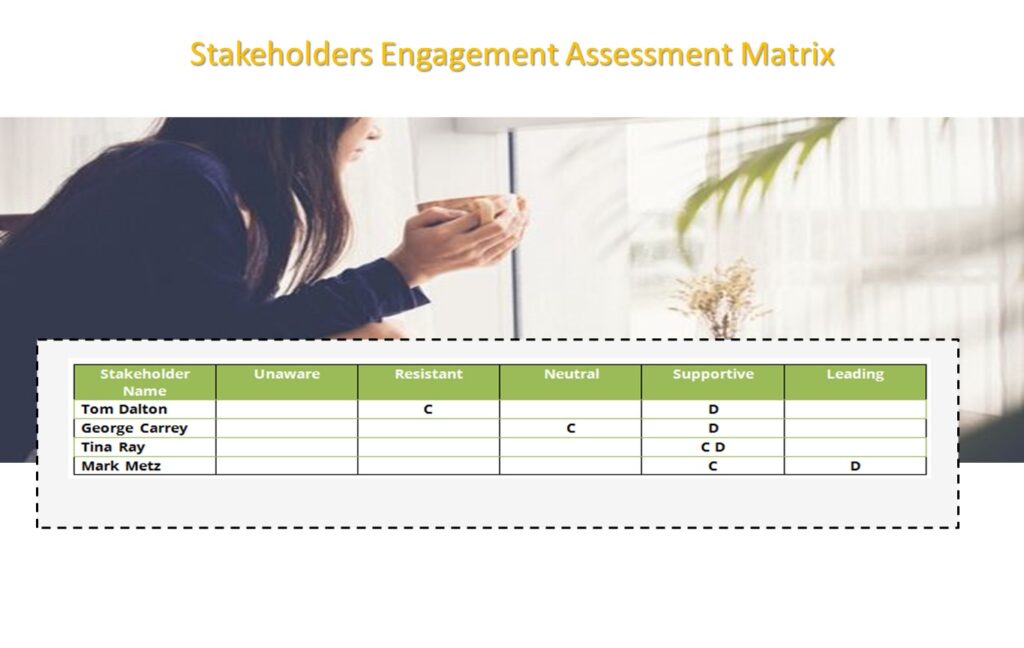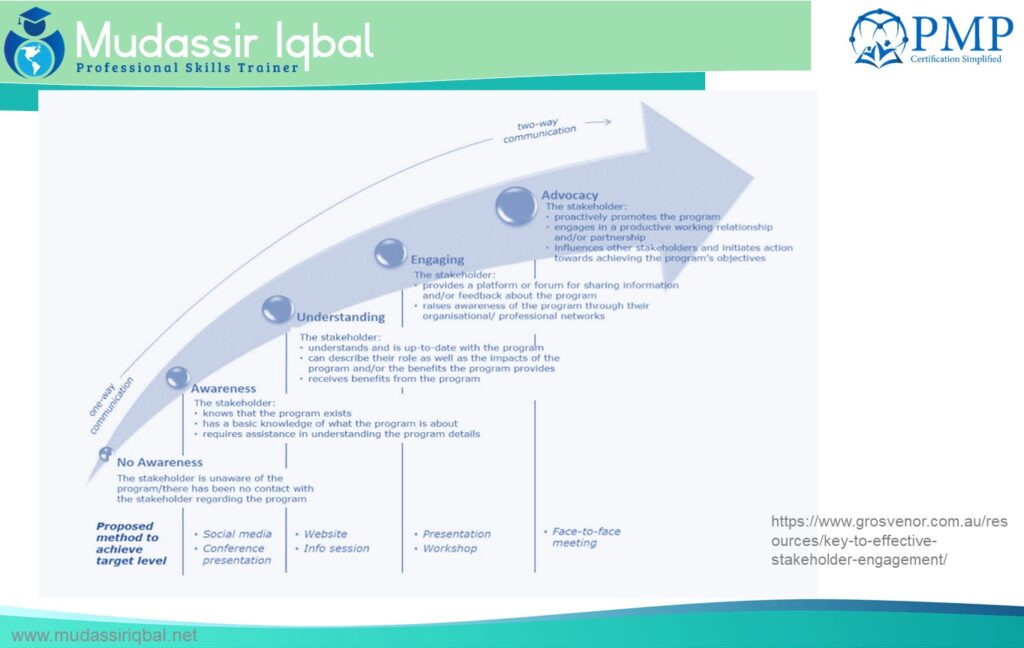The Stakeholder Engagement Assessment Matrix is a tool used to assess and prioritize stakeholders in a project or organization. It helps to identify which stakeholders are most important and relevant to a project or organization and determine the level and type of engagement that is required for each stakeholder.

By comparing the current and desired levels of engagement, organizations can identify gaps and areas for improvement. This information can then be used to develop and implement a stakeholder engagement plan to address these gaps and achieve the desired level of engagement with stakeholders.
The Stakeholder Engagement Assessment Matrix is an important tool in stakeholder management and can help to ensure that the right stakeholders are engaged at the right time, with the right level of intensity, to achieve the desired outcomes for the project or organization.
Stakeholder Engagement Myths
- Everyone is a Stakeholder
First, there is the misconception that all parties are stakeholders.
Utilize your professional discretion to select where you will invest your time and attention. If you attempt to maintain the same degree of stakeholder engagement with everyone on your stakeholder log, you will experience burnout and receive unequal returns on your investment.
- You can manage stakeholders
Engage with stakeholders instead of managing them. - You can determine who your stakeholders are
It simply isn’t true, particularly for initiatives that are complex, lengthy or have any feeling of scale. If you have never worked in this business or with this team before, it will be difficult to understand what is important to these individuals. Even if you can identify someone in the sense that you can list their name, you cannot analyse what makes them tick, what their concerns are, and how to best deal with this to achieve a successful conclusion for your project, since you just do not know.
- 4. Essentially, it’s just communication.
Even if the communications activity is evenly distributed and functioning at every stage of the project lifecycle, it is not enough to simply inform individuals of the situation. Telling someone does not interest them. Poor communication or communicating with the wrong people at the wrong time can be just as, if not more, destructive than no communication. You require feedback loops that facilitate discussion back into the project.
- It covers all project relationship issues
Stakeholder engagement activities and your communication strategy are not substitutes for teamwork, collaborative behaviours, or being a generally like and trustworthy individual.
Key to Effective Stakeholder Engagement

The key to effective stakeholder engagement is a seven-step process: create awareness, generate interest, encourage involvement, collaborate, secure buy-in, promote advocacy, and maintain sustainability. This process involves educating stakeholders about the project, addressing their concerns, collaborating with them, ensuring they understand their role in the project’s success, encouraging them to promote the project, and continuously engaging with them.

